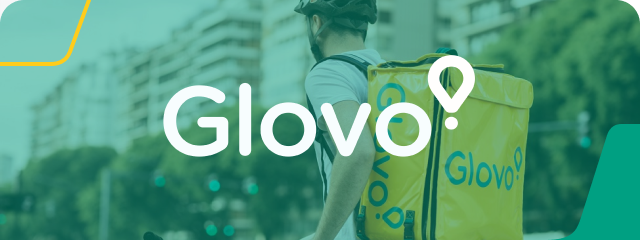- Solutions
- Solutions primary
- BY TEAM
- BY INDUSTRY
- BY USE
- BY SIZE
- View all solutions
- Solutions secondary
- Solutions primary
- AI
- Features
- Features primary
- Most popular
- first column
- second column
- third column
- fourth column
- View all features
- Most popular
- Features secondary
- Choosing the right plan
- Features primary
- Integrations
- Integrations primary
- MOST POPULAR
- first column
- second column
- View all integrations
- NEW
- first column
- second column
- View all integrations
- MOST POPULAR
- Integrations secondary
- Integrations primary
- Pricing
- Resources
- Resources primary
- Most popular
- first column
- second column
- third column
- Most popular
- Resources secondary
- Latest Blogs
- Try CloudTalk
- Resources primary
- Careers
FEATURE VS. FEATURE
Outbound IVR vs Inbound IVR: Differences, Use Cases, and Benefits
Making the right choice between inbound and outbound IVR can help your agents be more productive and your business save money. Let’s explore in detail how these two related technologies work and discover what they could do for your business.
Outbound
IVR
Inbound
IVR
Difference between
Power Dialer and Predictive Dialer
Parameter
Outbound IVR
Inbound IVR
Function
To automate outbound calls and the following interaction with customers, leads, and prospects.
To route inbound calls to the right agents or provide self-service information.
Purpose
Principally used for customer outreach, market research, sales, and other business processes where you contact someone outside the organization.
Usually to improve the efficiency of inbound customer support by enabling smart call routing and improving first call resolution.

What Is Outbound IVR & How Does It Work?
Here’s the simplest outbound IVR definition: It’s Interactive Voice Response technology that automates outbound calls and plays a preset audio message or menu of options to whoever answers. The recipient then uses keypad or voice activation to respond as appropriate.
Some outbound IVR systems also reach out via other channels such as SMS, social media, or email, but phone calls are still most common.
What Is Inbound IVR & How Does It Work?
Inbound IVR works in the opposite direction. When a customer calls a support line, the inbound IVR answers the call and guides the customer through an options tree.
Again, the customer will be able to use keypad or voice response to navigate the options until they either resolve their issue using self-service methods or their call is routed to a live support agent who can help them.


Inbound or Outbound IVR Software: Which Is Best For Your Business?
Which is the right choice for your business depends on how much you focus on inbound or outbound calling. Inbound IVR software is an ideal fit for customer support and helps manage high call volumes efficiently.
An outbound IVR solution is more appropriate for sales or marketing teams who regularly reach out to customers. It speeds up the rate at which your teams make these calls, so your agents can focus on doing what they do best.
Let’s talk about
pros and cons
Outbound IVR
Improve IVR Containment
IVR containment rate is the proportion of calls that don’t require live agent intervention. With AI-driven outbound IVR, you can maximize this by offering self-service functionality.
Save Agents Time
It cuts down the time your agents have to spend on repetitive tasks like dialing calls themselves, since the system automatically places the call to the next customer on the list.
Lower Operational Costs
Because it streamlines the process of placing outbound calls, you can do more for less. That means you don’t need as large a team, so your costs are lower.
Increase Customer Satisfaction
Using integrations with your CRM or other customer data platform, you can fully personalize your messaging for each individual, raising customer satisfaction levels.
Boost Engagement With Marketing Messages
Outbound IVR helps you keep in touch with your customers and target them with offers and deals they’ll love, so it keeps them fully engaged with your brand.
Shorten Sales Cycles
When you improve outbound calling procedures with IVR technology, you can target your messaging more effectively. This ultimately leads to better outcomes and helps shorten the overall sales cycle.
Can’t Handle Complex Interactions
Outbound IVR is great for sending messages, issuing notifications, and providing self-service options for simple tasks. But , if a more complex issue arises, you’ll still need a human to help resolve it.
Won’t Help You Build Rapport and Relationships
And, of course, for some things, people are irreplaceable. Developing a long-term bond of trust with a customer takes the emotional intelligence only a human can provide.
Inbound IVR
Empower Smart Call Routing
Inbound IVR works in combination with call distribution tech to enable smart call routing. This means you can implement skills-based routing so your customers speak with an appropriate agent every time.
Provide 24/7 Support With Self-Service
No matter when a customer calls, night or day, they’ll be able to access support via the IVR and resolve their own issues via the self-service options.
Improve Customer Support Efficiency
Because customers can access self-service support, it means human agents only have to deal with more complex queries, boosting service efficiency.
Raise FCR Rate
Keeping your first-call resolution rate high is an essential part of delivering excellent customer service. IVR empowers your teams to do this because it helps route each customer to the right agent the first time.
Boost Other Key KPIs
Inbound IVR helps with all sorts of performance metrics including reducing the average speed of answer and improving the service level rate. It enables customers to resolve simpler issues themselves while routing more complex queries quickly and effectively.
Reduce Operational Costs
Inbound IVR pricing is often affordable and easy to understand. Because using IVR also means you don’t need as large a team to handle all of your customer calls, you save on operational costs, too.
Enhance Customer Satisfaction
What customers want is to have their issue resolved successfully without having to wait for ages. Inbound IVR can help you deliver that, which makes a big difference to those CSAT scores.
Interactions Can Feel Impersonal
Some people prefer to talk to fellow human beings rather than select from an automated list of options. That’s why it’s crucial to always include an option for routing the call to a live agent.
Long Wait Times and High Abandonment Rate
It’s vital to build your IVR menus well and keep an eye on average wait times. Otherwise, customers might become frustrated and end the call before they can get through.
Some Customers Mistrust Automation
Some people just plain don’t like interacting with machines. There needs to be adequate alternative support in place for those customers who feel that way.
OUR FEATURES
Discover 4 most popular
VoIP features

Outbound IVR Use Cases
There’s a broad range of use cases for outbound IVR. One obvious example is how effective it can be for optimizing your lead generation and sales processes. It streamlines the task of reaching out and helps drive conversions efficiently.
It’s also great for collecting information, so you can use it for market research and gathering customer feedback. Finally, outbound IVR also works well for things like news updates, delivery or payment notifications, or appointment reminders.
Inbound IVR Use Cases
Inbound IVR is primarily used by customer support teams as a kind of virtual receptionist, leading customers through a menu of options. It’s IVR that makes smart call routing possible, making sure your customers reach an agent who is both available and able to assist.
Of course, IVR works with any kind of inbound call, so you can also use it for taking inbound sales calls or offering information updates, too.

FAQs
How Does Outbound IVR Work?
Outbound IVR systems usually work with auto dialers that place calls automatically by extracting numbers from a list. This list might be created from information stored in your CRM or a qualified leads database.
You set the parameters that define who to call, so you can curate the list however you want. For instance, you could set the system to send out reminders two days before the date of an appointment, or you could choose to contact only customers who live in a particular geographical area.
When someone picks up the call, the IVR either plays a pre recorded audio message or presents them with a menu of options. This could be about anything: A delivery notification, for example, or an invitation to purchase a specific product.
Outbound IVR technology allows administrators to build the option tree so that the person on the other end of the line moves through a specified call flow. This defines what happens next depending on how that person responds to each prompt.
During the call, the system collects the information it needs to execute its objective. In many cases, it will then present the call recipient with a number of self-service options.
How Does Inbound IVR Work?
Inbound IVR works in a similar way to Outbound IVR, although its principal focus is handling inbound calls.
When a customer calls, the IVR plays a greeting message and presents the caller with a list of options. This might mean prompting them to enter information such as an account number or to state a language preference. As with outbound IVR, you can design a call flow that takes the customer on a journey through the options tree.
The system essentially acts something like a triage process. It determines which customer queries are simple enough to offer self-service solutions for, and which are more complex, needing human attention.
Most IVR systems also incorporate alternative options. For example, they might ask the customer if they would prefer a callback later rather than to wait in a call queue. They could even encourage callers to switch from continuing the call to another channel altogether like SMS.
When the IVR system establishes that a call needs to be routed to a human agent, it works in tandem with the call distribution system to route it to an available support employee who can help.
Does My Business Need Outbound IVR or Inbound IVR?
This very much depends on the nature of your business.
If you deal with a high volume of incoming calls, or call volumes vary unpredictably, inbound IVR can be a terrific choice to ease the burden on your staff and help make sure your customers are receiving the service they deserve.
Equally, if your business is more heavily focused on outbound communications like lead generation or sales prospecting, outbound IVR can save a lot of time and make your day-to-day operation vastly more efficient.
It’s important to note that this isn’t an either/or situation, of course. Large companies often use both outbound and inbound IVR systems for different purposes. Typically, that might mean investing in inbound IVR for the customer support call center and outbound IVR for use by the sales and marketing team.
Are Outbound IVR Calls Interactive?
They usually are, but they don’t have to be. It’s perfectly possible just to use outbound IVR systems to call customers and play audio messages that don’t need a response there and then.
Realistically, however, doing this all the time would mean you’re not taking full advantage of the IVR’s capabilities. Interactivity is built into the system, so call recipients can select from a menu of options via keypad or voice input.
What’s The Difference Between an Outbound and an Inbound Call?
Select a Power Dialer provider that offers seamless integration with your current systems, provides robust support and training, and matches your specific feature needs, such as CRM integration, call analytics, and ease of use.
CloudTalk is a data-driven solution for exceptional customer experience and intelligence is a key part of it.
Schedule a demo today and find out for yourself.























